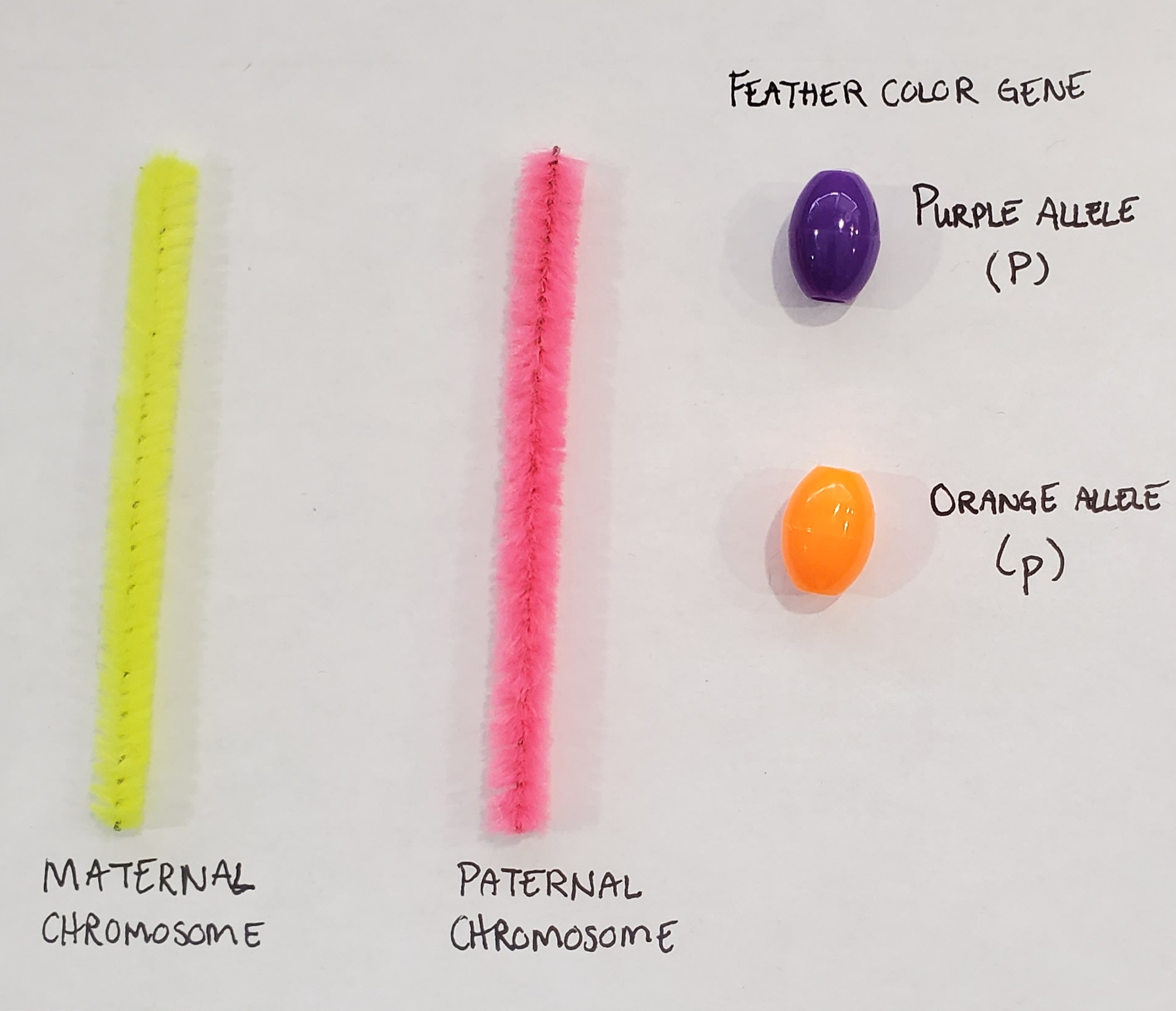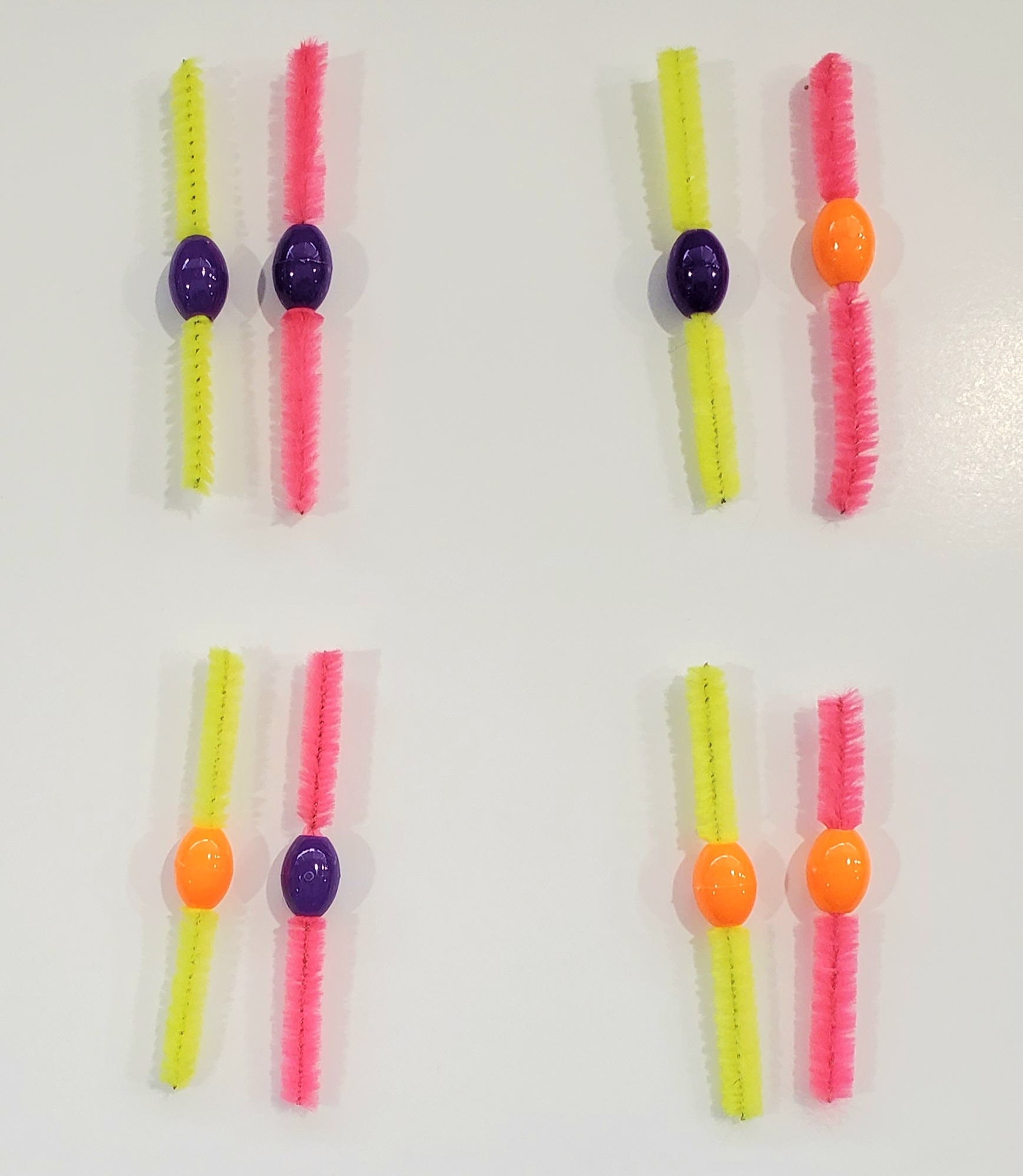Summary
Centered on the phenomenon of the Blue Fugates, students will explore how recessive traits increase in a population using a Punnett square activity, genotype/phenotype ratios and allele frequency calculations, and pedigree analysis. By the end of the lesson they will be able to explain how social, genetic, and physiological factors interacted to cause the high number of blue people in the Troublesome Creek region of Kentucky. Basic understanding of genetics, heritability, and constructing a Punnett square is required for this lesson, and it works best in the middle of a unit over genetics. This is a great second lesson after A Trait Accompli, which introduces phenotypes and genotypes.
Essential Question(s)
How do rare, recessive traits become common in a population?
Snapshot
Engage
Students complete a collective brain dump after watching a video about the Blue Fugates.
Explore
Students complete a Punnett square activity using model chromosomes to understand the relationships among genotype, phenotype, and protein synthesis.
Explain
Students learn how to calculate genotypic and phenotypic ratios and allele frequency, and Why-Light a reading about the Blue People of Troublesome Creek.
Extend
Students analyze a Fugate family pedigree as evidence of the genetic factors contributing to the blue trait in the family.
Evaluate
Students complete a Five Whys activity to explain the interconnected factors that can lead to an increase of a recessive allele/trait in a population.
Materials
Punnett Square Exercise (attached; one per student)
Punnett Square Exercise Teacher Key (attached)
Ratios and Frequencies (attached; one per student)
Ratios and Frequencies Teacher Key (attached)
Fugate Pedigree (attached; one per student)
Fugate Pedigree Teacher Key (attached)
The Blue People of Troublesome Creek (attached; one per student)
Full page Fugate pedigree
Pipe cleaners
Plastic beads
Meiosis manipulative kit (see Explore)
Engage
Show students the video The Incredible Story of the Blue Fugate Family. Stop the video at 2:28 so you don't give away the information students discover throughout the lesson.
After, have the class complete a Collective Brain Dump to record all of the information they know about the phenomena based on the video. Before moving on, ask students to speculate why the people in the video were blue.
Explore
In the following activity, students will use Punnett squares and a simple model of chromosomes to synthesize their understanding of meiosis, and how genotypes represent genes which code for the proteins that produce phenotypes. The purpose is to get students thinking explicitly about the biological mechanisms that Punnett squares are used to model, rather than simply practicing how to use a Punnett square. Provide each student with a copy of the Punnett Square Exercise Student handout.

Students should complete Part 1 independently. After they have a few minutes to complete the exercise, have the students share out their answers. Prompt them to explain the relationship between alleles and functional proteins in the example (i.e., one allele of the gene produces proteins that don't work and therefore can't produce the dominant phenotype).
Have students with maternal chromosomes pair up randomly with students with paternal chromosomes and complete the part 2 activity. Repeat this one more time with new pairs. As in part 1, have students describe the relationship among genotypes, proteins, and phenotype through discussion following the activity.

Explain
Remind students that Punnett squares help us determine all possible genotypes for the offspring of hypothetical parents, not what offspring are actually produced. In general, the individual offspring of specific parents are not important to our understanding of genetics; instead, we must look at genotypes and phenotypes at a population level. One easy way to approach this is to use ratios and frequencies.
Hand out the Ratios and Frequencies Student handout. The dominant allele (P) has been bolded in several places on the handout to help visually distinguish it from the recessive allele (p). Using the Punnett squares as simple examples, walk students through the difference between genotypic and phenotypic ratios, and show them how to calculate allele frequency. They will be applying this to a later activity related to the Fugate family. Reinforce for students that this is the same process used with data from entire populations and is not restricted to simple Punnett square examples.
After the students finish the calculations, pass out The Blue People of Troublesome Creek handout. Have students use the Why-Lighting strategy to address the question: "Why did the Fugates have so many blue-skinned family members?" Students should read, and when they find something that they feel contributes to the answer, highlight that portion and write their reasoning for the highlight in the margins.
When the students are done with the article, have the class complete an I Think/We Think exercise. Students should compare what they highlighted with a partner, and then the pairs share their most important idea or ideas with the whole class.
Extend
Next, pass the Fugate Pedigree out to each student. The activity can be completed most effectively either independently or in pairs. Give them time to complete problems 1-5 before reviewing the answers with the class. Ask students to share their answers and provide justifications for the genotype questions (1-4) and have a student or two work out the allele frequency question (5) for the class. Allow students to complete question 6 independently as a formative assessment for the complexity of student understanding.
Evaluate
Wrap up the lesson by asking students to complete the Five Whys strategy to answer the question: "Why are so many Fugates blue?" They should use evidence from their reading and the Extend activity to support and explain each reason they identify.
Resources
DisInfluence. (June 8, 2021). The Incredible True Story of the Blue Fugates Family. YouTube. https://youtu.be/u68azJCy1hs
K20 Center. (n.d.). Collective brain dump. Strategies. https://learn.k20center.ou.edu/strategy/111
K20 Center. (n.d.). Five whys. Strategies. https://learn.k20center.ou.edu/strategy/90?rev=658
K20 Center. (n.d.). Why-lighting. Strategies. https://learn.k20center.ou.edu/strategy/128
K20 Center. (n.d.). I think / we think. Strategies. https://learn.k20center.ou.edu/strategy/141



